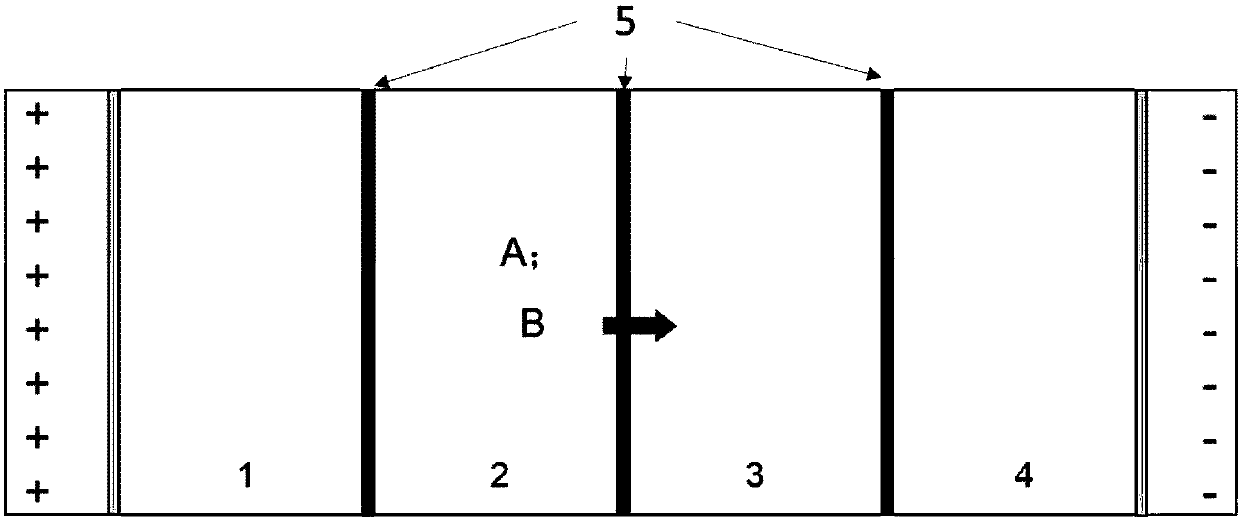Preparation and application methods of blended ion exchange membrane
An ion exchange membrane and application method technology, applied in separation methods, chemical instruments and methods, membrane technology, etc., can solve the problems of reducing membrane flux, difficult to control the pH of the membrane chamber, and reducing the separation effect.
- Summary
- Abstract
- Description
- Claims
- Application Information
AI Technical Summary
Problems solved by technology
Method used
Image
Examples
Embodiment 1
[0015] The preparation and application method of a blended ion-exchange membrane in this embodiment relates to a blended ion-exchange membrane for separating myosin and bovine serum albumin and a separation device thereof, including the following steps: using N-methylpyrrolidone as a Solvent, prepare a casting solution containing 10% sulfonated polyaryl ether ketone and 15% polysulfone, and use a 250 μm scraper to prepare a blended membrane on a non-woven fabric to obtain an ion exchange membrane with a membrane pore size of 20 nm.
[0016] The separation device is divided into four membrane chambers by a composite membrane. Using 20mM tris(hydroxymethyl)aminomethane as a buffer solution, the pH values of the four membrane chambers are controlled by acid-base automatic titration to be 4, 4.8, 7.0, and 9.5, respectively. The electrode solution of the anode is a phosphoric acid solution with a concentration of 0.033M, the electrode solution of the cathode is a sodium hydroxide ...
Embodiment 2
[0018] The concentration of the anode electrode solution of the above isoelectric focusing membrane system was changed to 0.033M phosphoric acid solution, the concentration of the cathode electrode solution was 0.1M sodium hydroxide solution, the buffer solution concentration was 50mM, and the current during the experiment was controlled at 80mA. , the measured myosin flux was 2.47 mg / LMh, and the purity in chamber 3 was 98.9%.
Embodiment 3
[0020] The concentration of the anode electrode solution of the above isoelectric focusing membrane system was changed to 0.1M phosphoric acid solution, the concentration of the cathode electrode solution was 0.2M sodium hydroxide solution, the buffer solution concentration was 35mM, and the current during the experiment was controlled at 80mA. , the measured myosin flux was 4.79 mg / LMh, and the purity in chamber 3 was close to 100%.
[0021] H 3 PO 4 (M)
PUM
| Property | Measurement | Unit |
|---|---|---|
| Membrane pore size | aaaaa | aaaaa |
Abstract
Description
Claims
Application Information
 Login to View More
Login to View More - R&D
- Intellectual Property
- Life Sciences
- Materials
- Tech Scout
- Unparalleled Data Quality
- Higher Quality Content
- 60% Fewer Hallucinations
Browse by: Latest US Patents, China's latest patents, Technical Efficacy Thesaurus, Application Domain, Technology Topic, Popular Technical Reports.
© 2025 PatSnap. All rights reserved.Legal|Privacy policy|Modern Slavery Act Transparency Statement|Sitemap|About US| Contact US: help@patsnap.com

